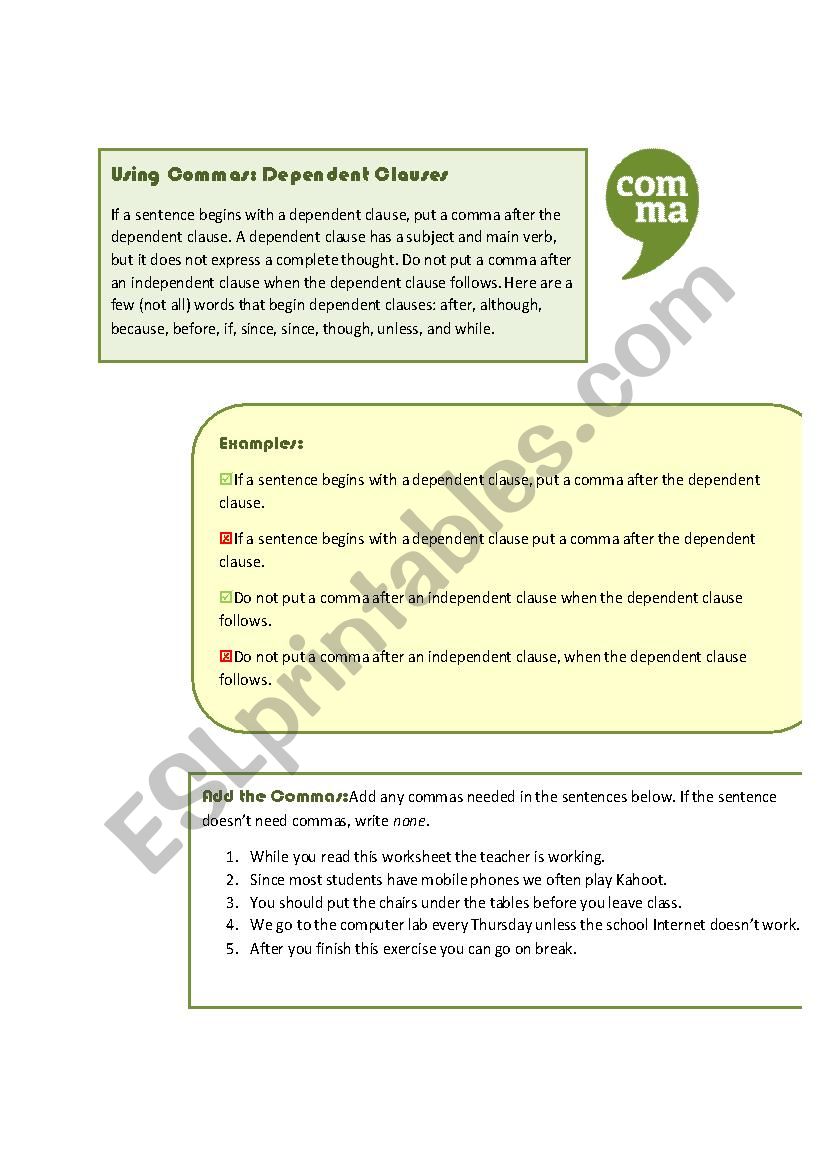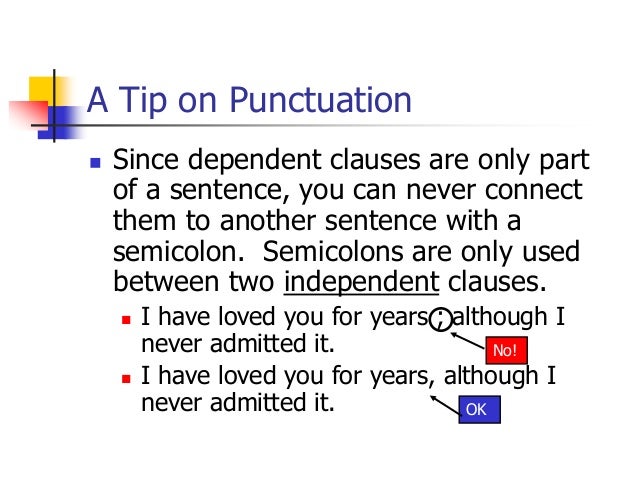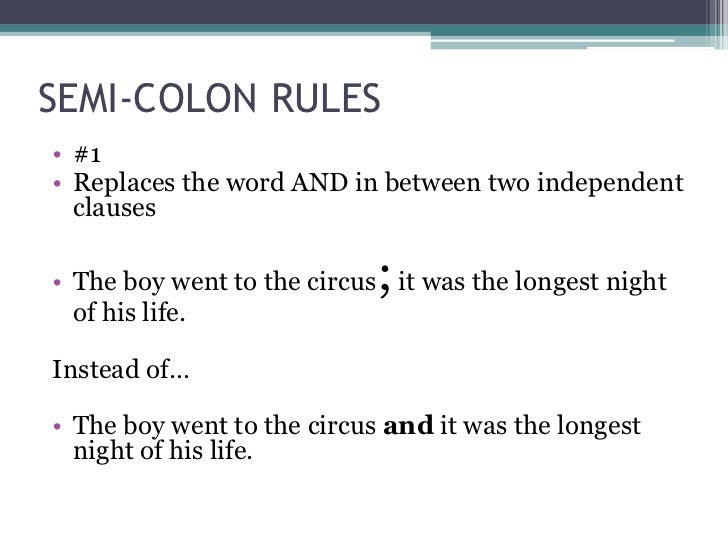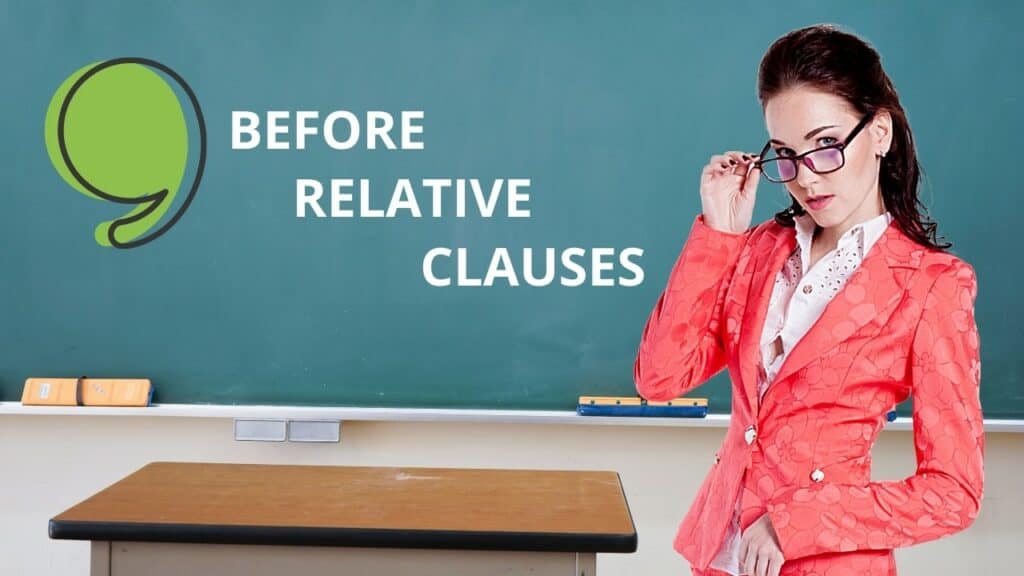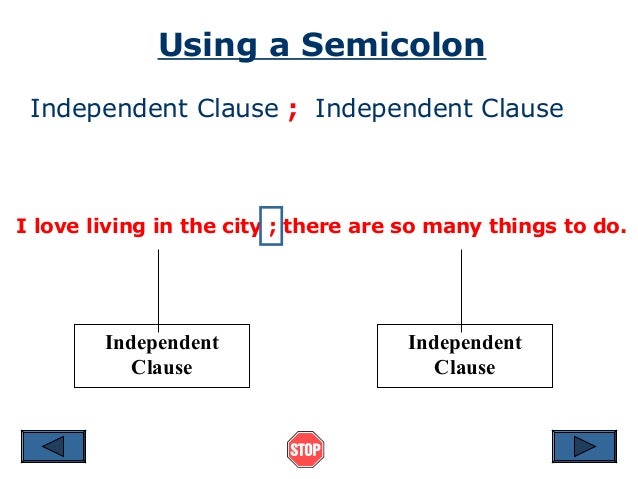A compound sentence contains two or more independent clauses linked by a coordinating conjunction. Independent clauses are those that can stand alone as complete sentences. The most common coordinating conjunctions are and, but, and or. In certain cases, nor, yet, so, and for act as coordinating conjunctions. Perhaps the most common use of a semicolon is to link two separate, independent clauses that could stand as grammatically correct, fully formed sentences on their own.
The caveat to this rule is that the clauses must be related. For instance, the phrases, "I hurt my knee," and "I have a hard time walking," are two clauses that could be complete sentences on their own and are also related. If you locate a run-on sentence and find where the two independent clauses "collide," you can decide how best to separate the clauses. Fixing run-on sentences is very similar to fixing comma splices. You can make two complete sentences by inserting a period. You can use a semicolon between the two clauses if they are of equal importance; this allows your reader to consider the points together.
Do You Need A Comma Between Two Dependent Clauses You can use a semicolon with a transition word to indicate a specific relation between the two clauses; however, you should use this sparingly. You can use a coordinating conjunction and a comma, and this also will indicate a relationship. Or, you can add a word to one clause to make it dependent. In this sentence, you are late and you will fail the class are independent clauses, and if…then is the correlative conjunction. So, the above example should include a comma because the correlative conjunction links two independent clauses. Once you discover where the two independent clauses are "spliced," there are several ways to separate them.
You can use a coordinating conjunction following the comma, and this also will indicate a relationship. One of the purposes of the comma is to balance in parallel elements of like meaning and form. A common question regarding coordinating conjunctions and commas is whether a comma should appear before or after but or and or any other conjunction. (In this instance, should there be a comma after but, or is the comma before but correct?). The rule is that when two independent clauses are joined by a conjunction, a comma should nearly always precede the conjunction . That is, like in the example above, there should be a comma before but, but there would never be a comma after but.
This is the trickiest arena in which to learn comma usage. You really need to know the rest of your grammar rules well in order to properly use commas. Knowing dependent and independent clauses is essential – so bone up on it if you must! (These videos are a good place to start.) In today's post, I'm going to cover each of the four sentence structure types and let you know when and when not to use a comma.
In some regards, compound sentences are just a writing convention. An independent clause is a unit of grammatical organization that includes both a subject and verb and can stand on its own as a sentence. In the previous example, "I went running" and "I saw a duck" are both independent clauses, and "and" is the coordinating conjunction that connects them. But the semi-colon certainly tells the reader to segregate the first element from the second more sharply than the comma segregates the two elements in the first clause.
Note that not all commas are similarly up for debate. Many follow directly from the grammar of the sentence, such as those that distinguish between restrictive and nonrestrictive elements in a sentence. But this comma that comes in to demarcate two independent clauses is entirely optional — in all contexts — if those two clauses are short and closely related. Beyond that, in fiction, if you're going for a particular voice, a particular effect, it's perfectly permissible to omit this comma even with much longer structures. You'll see that approach more with some authors than others. As you may recall from above, an independent clause has a subject and a verb and can stand on its own as a sentence.
Often, a coordinating conjunction will connect two independent clauses — like the word "but." CMOS states that independent clauses stand on their own and are joined by conjunctions such as and, but, so, yet, etc. Though the comma can be omitted if the clauses are short enough or closely connected to each other, typically commas are needed to separate two independent clauses. Many students understand that a complete sentence contains a subject and a verb, but what if that sentence does not create a complete thought?
Dependent clauses may look a whole lot like independent clauses, but they are only meant to complement the independent clause and not stand on their own. One of the ways we use commas is to join two independent clauses with a coordinating conjunction. When a clause makes sense by itself and can stand as an independent sentence, it's called an independent clause. When you have two independent clauses (i.e., full sentences) that are joined by a coordinating conjunction, you have a compound sentence.
Knowing how to distinguish a dependent clause or a phrase from an independent clause will help you to use punctuation correctly and construct proper sentences. A dependent clause or a phrase can not stand alone as a sentence. It is therefore dependent on other words being added to it to create a sentence. In most cases, joining two independent clauses (i.e., clauses that can stand alone as complete sentences) by a comma creates a comma splice. Academic writing expresses complex ideas and, as a result, often requires sentences that are equally complex.
For this reason, it's not uncommon to see comma splices—joining two independent clauses with a comma—in your work as the demand for complexity increases. Below you'll find ways to recognize and correct these kinds of errors. Listing commas can separate lists of nouns, verbs, adjectives, dependent clauses, or even complete sentences.
This can mean that you can have a comma before an "and" that is followed by a dependent clause if it is the last item in a list of dependent clauses. Some authors like to join sentences with listing commas, e.g. Some students are unfamiliar with the definitions and rules of clauses and punctuation, the basic building blocks of sentence structure.
This problem does not show itself too much when you write in the first person voice ("I remember once . . .") because that is your natural idiom. In some ways, it seems like trying to write in a foreign language. When combining two independent clauses, a comma must be placed before the conjunction. Independent clauses refer to the groups of words which can stand independently and create a meaning. For example, I went to the market, but forgot to take money.
To combine two complete sentences/ independent clauses, you have two options. You can use a comma with a conjunction, or you can use a semicolon. If you use a comma and conjunction, the acronym FANBOYS will help you remember the conjunctions . If you use a semicolon, you do not have to capitalize the first letter of the next sentence.
Fused sentences happen when there are two independent clauses not separated by any form of punctuation. The error can sometimes be corrected by adding a period, semicolon, or colon to separate the two sentences. Though there are multiple ways that you can connect two independent clauses, a comma by itself is not one of them. Think of a comma as a flimsy punctuation point that needs extra support from a FANBOYS word.
In contrast, the period, semicolon, and colon are stronger anchors. Therefore, they don't need the extra support from FANBOYS conjunctions. A comma splice occurs when a comma is used incorrectly in place of a semicolon or without a coordinating conjunction to join two independent clauses. Use a semicolon to replace a comma when you use a coordinating conjunction to link independent clauses that already contain commas. Do not connect two independent clauses with a comma ("comma splice").
Two independent clauses, by definition, can each stand alone as a sentence. However, they can not be pieced together with a comma. Instead, either use a semicolon or separate the clauses out as two sentences. Like an independent clause, it has a subject and a verb. It may not, however, express a complete thought and may begin with a signal word called a subordinating conjunction. The chart below outlines common coordinating and subordinating conjunctions discussed in this section.
A complex sentence contains an independent clause and one or more dependent clauses. A dependent clause, unlike an independent clause, cannot stand on its own as a complete sentence. The conjunctions and prepositions most commonly used to introduce a dependent clause include if, because, while, as, although, since, and unless. If the two independent clauses are very short, you can omit the comma. As noted in the intro, the trend nowadays is to omit the comma wherever possible.
Note that students might be wondering how they can tell if a clause is 'short.' Remind them that if they're in doubt, use a comma because that will always be considered correct. In fact, you may not want to mention this rule to your lower-level students—it might cause unnecessary confusion. Although this coordinating conjunction conjoins two independent clauses, they are short and closely related. And adding in the comma would change the shape of the larger structure. It's there also to call out this balanced relationship between the two clauses.
Using it represents the baseline and neutral approach. Still another way to form a compound sentence is to use a semicolon AND a conjunctive adverb between the two independent clauses. A comma splice is the use of a comma between two independent clauses. Writers often combine independent clauses in a single compound sentence to emphasize a close relationship between ideas. The punctuation of compound sentences varies depending upon how you connect the clauses. Currently, this sentence is made up of two dependent clauses.
Punctuation alone will not fix the problem, since you need at least one independent clause for a proper sentence. D changes the second clause into an independent clause, thus correcting the grammar error. It's likely your instincts are telling you to separate the two clauses with something. However, if we look to answer choices B, C, and D, all introduce new grammar mistakes. Both B and C are wrong because they are using rules that only apply when connecting two independent clauses together.
D is incorrect because the comma breaks the two clauses at an awkward spot. This occurs when a comma is used to connect independent clauses that do not include a coordinating conjunction. Semicolons (;) Semicolons are used to connect two independent clauses and to separate items in complex lists.
What happens here is that the second part of this compound LOOKS like an independent clause; i.e., it looks as if it is just a subject and verb by itself. You have to be aware of the construction in front of it and realize that it is really a dependent clause with the introductory word missing. And two dependent clauses that are joined by a coordinate conjunction do NOT take a comma.
A simple sentence contains only one independent clause and no dependent clauses. When a simple sentence contains a conjunction, you might be tempted to insert a comma before the conjunction, as you do with a compound sentence. With a simple sentence, however, the general rule is to omit the comma. Though not necessarily mechanical, the use of commas in lists is well established. In this usage, the comma separates a series of words, phrases, or independent clauses.
If the conjunction is only joining parts of the independent clauses (i.e., the second subject and/or verb is dropped because it is the same), no comma should be used. The definitions offered here will help you with this. That means we must change the first clause to make it fit in with the rest of the sentence. The only answer choice that correctly does this is C. By staying flexible with our edits and zeroing in on the part of the sentence we can change, we aren't led astray by distracting answers. Subordinate clauses are used to add information that gives further meaning to an existing independent clause.
The list of subordinating conjunctions below are all familiar words that you have used before. "Everyone laughed at him" could be a complete sentence, but "Because Alex wore his Superman costume to school" cannot stand as its own sentence. When a dependent clause is followed by an independent clause, separate them with a comma. Use a semicolon to join two related independent clauses in place of a comma and a coordinating conjunction .
Make sure when you use the semicolon that the connection between the two independent clauses is clear without the coordinating conjunction. When a coordinating conjunction is used to separate independent clauses, a comma should be placed before the conjunction. Use a comma to connect two independent clauses without a conjunction. Use a comma before a coordinating conjunction to connect two independent clauses. Dependent Clauses Not Constituting a Sentence ("Sentence Fragments") -- Students sometimes write a dependent clause when they think they are writing a sentence. This is one of the worst writing errors one can make.
Dependent clauses left standing alone are often referred to as sentence fragments. While they contain a subject and a verb, they nonetheless represent incomplete thoughts. Be sure that you understand the difference between a dependent clause and a sentence. The following are examples of dependent clauses that, like all such clauses, do not constitute sentences.
The words "whereas" and "although" are subordinating conjunctions. The general rule for subordinating conjunctions states that you shouldn't use a comma before a subordinating conjunction that comes after the main clause. However, "whereas" and "although" are examples of "adverbs of concession," along with "though" and "even though". They are used where a dependent clause is contrasting to the main clause (a bit like "but").
You should use a comma to introduce a dependent clause that starts with an adverb of concession. When joining two independent clauses, or clauses that could stand on their own as full sentences, place a comma before the conjunction. If the second independent clause is very short, or if it is an imperative, the comma can be omitted. If two independent clauses are joined by a conjunction , use a comma. This is true whether the subject is the same or different in both clauses. This is also true for imperative sentences where the subject is dropped.








